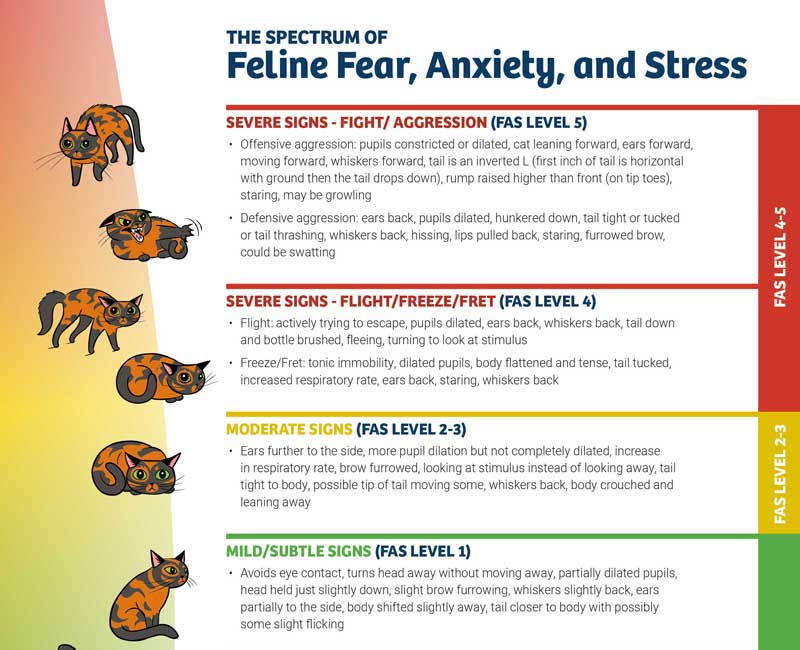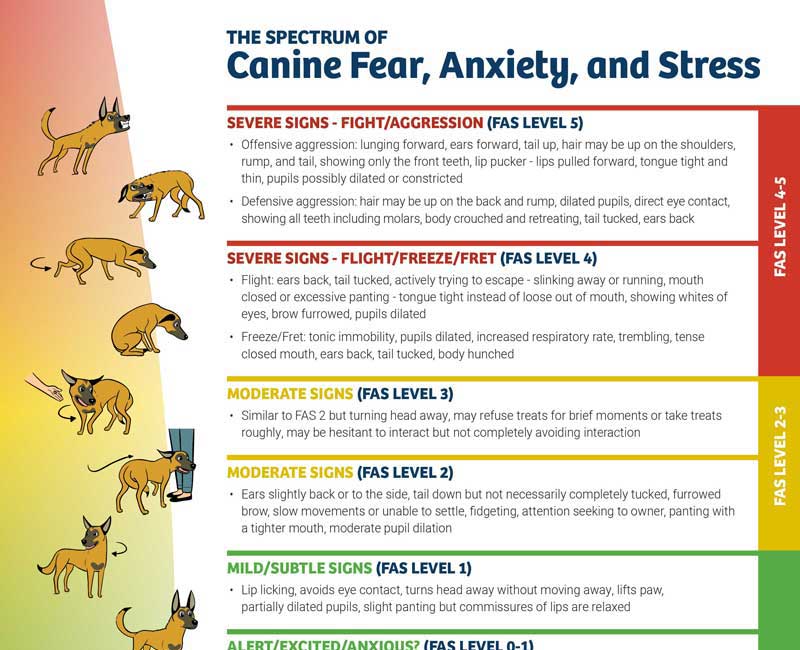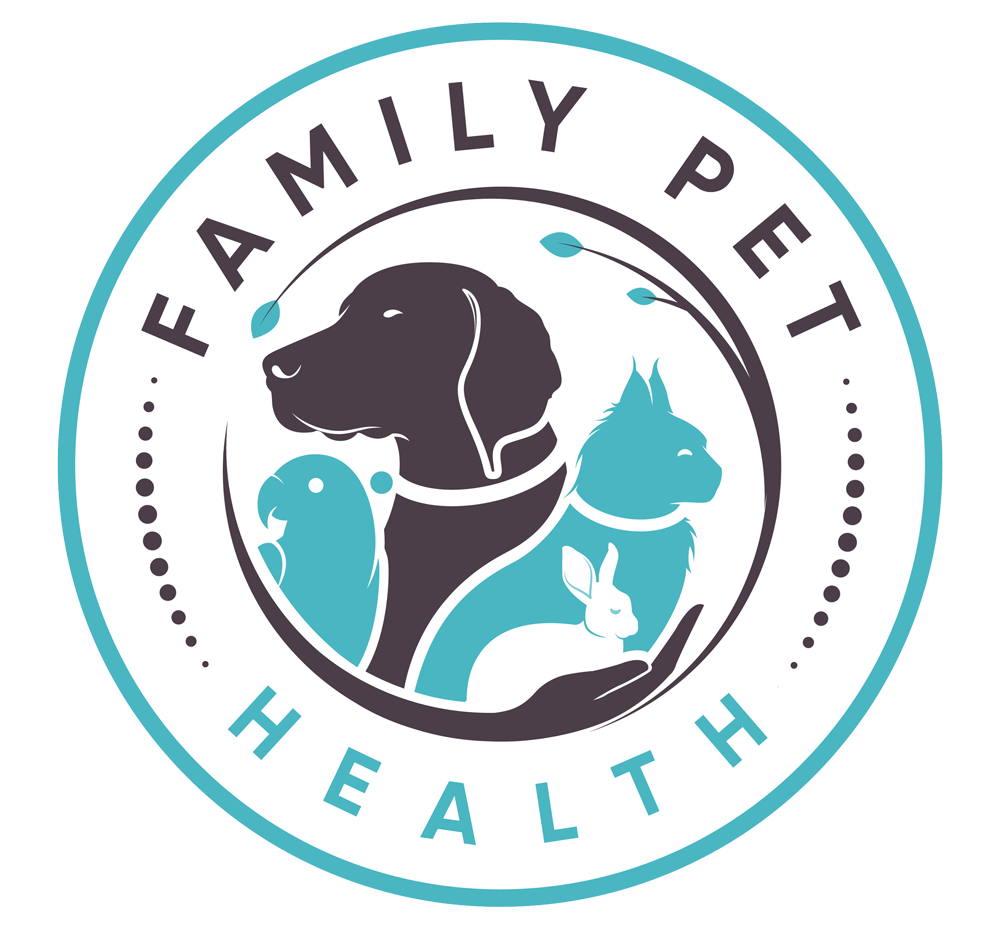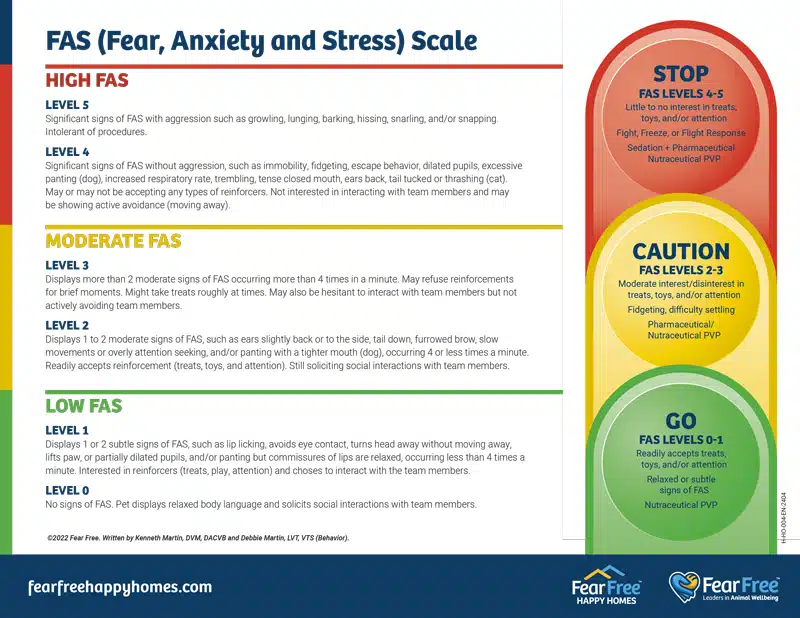How does your pet react to a visit to the veterinarian’s office?
Does your dog wag her tail, solicit pats from the staff, lick the faces of the associates and otherwise generally exhibit “smiling” behavior? Or does she cower behind your legs, avoid eye contact, tuck her tail and avoid interacting with the associates?
Does your cat raise his tail and rub up against the legs of the veterinary associates, eagerly accept treats and curiously explore the exam room? Or does he loudly vocalize his fear, exhibit “crazy cat eyes,” and hunker down in the corner of the room or his cat carrier?
All of these signs of your pet’s comfort level are indicators of their relative fear, anxiety, and stress (FAS). Using the FAS scale, your veterinary team can assess and assign a score of 0-5 based upon obvious and subtle signs of your pet’s emotional health. The team can track the pet’s comfort level before, during, and after the exam to adjust the treatment plan if necessary. A pet experiencing particularly high FAS may require a slower approach or even a follow-up exam with anxiety medication.
A pet’s FAS score may vary and change during their veterinary exam. Some pets may exhibit fear of the weight scale but otherwise enjoy the office visit. Many pets tolerate exam handling but not blood collection. Even examining particular body parts (face or paws) can elicit FAS responses from a pet.
Let’s take a look at the FAS scale and where pet behavior falls.


LOW FAS 0-1: GO
The veterinary team can easily continue procedures with a level 0-1 patient.
Level 0:
No signs of FAS. Pet displays relaxed body language and solicits social interactions with team members.
Level 1:
1 or 2 subtle signs of FAS such as lip licking, avoiding eye contact, turns head away without moving away, lifts paw, partially dilated pupils, and/or panting but commissures of lips are relaxed. These signs occur fewer than 4 times a minute. The pet remains interested in reinforcers (treats, play, attention) and chooses to interact with the team members.
MODERATE FAS 2-3: CAUTION
Pet is fidgeting and not readily accepting treats or attention. May interact with staff. At this point, the staff can assess the situation and try to find ways to comfort the patient. They may use a different treat, form of handling, or take a break. If the pet continues to struggle, sedation may be recommended, or the exam may be rescheduled for a later date with pre-visit pharmaceuticals (PVP).
*PVP is a term used to describe anti-anxiety medications that are prescribed to help ease the FAS a pet experiences with vet visits or other stressful events.
Level 2:
1 or 2 moderate signs of FAS such as ears slightly back or to the side, tail down, furrowed brown, slow movements or overly attention seeking, and/or panting with a tighter mouth (dog). These signs occur 4 or fewer times a minute. The pet still accepts reinforcers (treats, play, attention) and solicits social interactions with the team members but possibly more cautiously.
Level 3:
More than 2 moderate signs of FAS occurring more than 4 times a minute. The pet may refuse reinforcements for brief moments. Might take treats roughly at times. May also be hesitant to interact with team members but not actively avoid team members.
HIGH FAS 4-5: STOP
Pet is not willing to participate in procedures and may attempt to get away or escape. Pet may exhibit fight, flight, or freeze response. Pet does not accept treats or attention. Sedation may be recommended or rescheduling with PVP.
Level 4:
Significant signs of FAS without aggression, such as immobility, fidgeting, escape behavior, dilated pupils, excessive panting (dog), increased respiratory rate, trembling, tense closed mouth, ears back, tail tucked or thrashing (cat). May or may not be accepting any types of reinforcers. Not interested in interacting with team members and may be showing active avoidance (moving away.)
Level 5:
Significant signs of FAS with aggression such as growling, lunging, barking, hissing, snarling, and/or snapping. Pet will not tolerate procedures and most likely needs sedation for handling or procedures. PVP will likely be prescribed before future visits.
Every patient has different needs, and we at Family Pet Health aim to address those needs with Fear Free techniques.
Family Pet Health is Rutherford County’s first and only Fear Free Certified veterinary clinic. Every one of our team members has completed special training to become Fear Free Certified Professionals and is continuously making efforts to improve their skills in recognizing and addressing fear, anxiety, and stress in our patients. The training helps us to provide services that are both physically and emotionally beneficial to our patients and you, the pet parents.
Practice Certification takes Fear Free implementation to the next level – from an individual to a joint effort that requires our entire practice team to work together to achieve and maintain certification. As a Fear Free Certified Practice, we have successfully implemented Fear Free into all aspects of our business: culture and leadership, client education, staff training, facility, and patient visits.
Pet owners who would like more information about FAS and how it affects their pet’s emotional well-being can speak to one of our pet specialists here at Family Pet Health by calling 615-907-8387.

